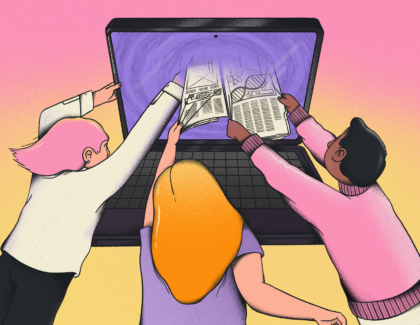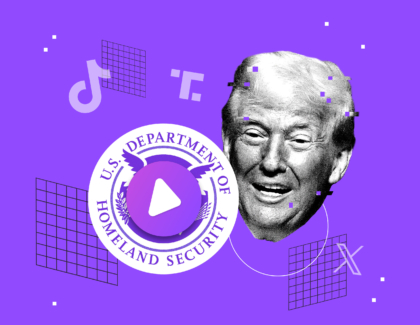Sign up for the daily CJR newsletter.
Last year, Christoph Mergerson, a Tow Fellow, set out to examine how media outlets in the South conducted their coverage of the pandemic and the Black Lives Matter movement, as they related to Black and Hispanic communities in the South. In a forthcoming report for the Tow Center, Mergerson dissects his research on digital newsrooms in New Orleans, LA, Austin, TX, Charlottesville, VA and Jackson, MS through interviews with newsroom leaders and journalists and by conducting content analyses on the coverage itself. As large legacy publications such as Gannett and the Los Angeles Times have “recently undergone internal soul-searching and reckonings with their histories of poor coverage of communities of color,” as Mergerson put it, his research offers a sense of how the news can be better shaped to foster trust, diversity and inclusion with readers.
Note: this conversation has been edited for length and clarity.
How did you come up with the idea for this research?
My family is from Texas, so I spent a lot of time in Texas over the summers. I got my graduate degree there, and moved to New Orleans and lived there for a while. And I’ve always been interested in Southern media, especially living there. I was just disturbed, living down South, at the way that I felt that local Black communities were represented in the press. When I saw us being depicted in news outlets, we were either catching a football or entertaining somebody or going to jail. So that got me interested in studying race in the news media to understand why those things were.
Within that context, what led to this project in particular?
Nonprofit media has been promoted by many as being a good, possible corrective to the failures of commercial news media to represent local Black and Hispanic communities. But the idea that removing the profit imperative will empower those news outlets to pursue news that might not get the most page clicks and satisfy advertisers, but instead provide a badly needed form of journalism––my suspicion is that just because an organization is a nonprofit does not mean that it will necessarily be more racially inclusive or represent racial and ethnic communities any better.
What are some of the differences you’ve observed between commercial versus nonprofit coverage of the type of stories that you have been paying attention to, especially related to COVID-19 and the Black Lives Matter protests?
I’m still analyzing the data, so I would hesitate to give a definitive conclusion. But first of all, nonprofit media tends to be niche media, right? That’s definitely something that I’ve noticed. And so my initial suspicion, based on the data I’ve seen just preliminarily, is that nonprofit media outlets cover stories that are neglected in mainstream media; stories that tend to have more implications for Black and Hispanic communities. One thing I will note is that the more diverse the media outlet is in terms of its leadership and staff, the more news of interest it tends to produce for local Black and Hispanic communities. Which isn’t a surprise, per se. But I feel comfortable saying that news outlets that indicate an interest and promote anti-racism as a value are going to be hard pressed to continue to do that without diversifying their own ranks.
So you’ve found that it’s not so much diversifying coverage as it is diversifying the newsroom itself?
Diversifying the newsroom gives you the advantage of people who have certain life experiences and perspectives who can suggest angles that might not otherwise come up. They can serve as a useful sounding board. Having said that, I’ve noticed that one of the ways that smaller newsrooms (particularly some nonprofits) have dealt with their lack of inclusion, even as they recognize that it’s a problem, is that they really understand the importance of building relationships with members of the community.
Could you briefly summarize why you think legacy newsrooms have failed communities of color? Obviously racism is a huge part of the answer to that question.
Racism is definitely a factor. I’m teaching a journalism history class at the University of Maryland and teach how the penny press [one of the US’ earliest low-cost mass media in the form of newspapers that functioned as both news bulletin boards and tabloids] was openly racist and culturally violent. That legacy doesn’t die out.
But one of the major problems that legacy publications are having is the precarity of the journalism industry. If you’re a Black or Hispanic person and you’re well-educated with a choice of careers available to you and you’re looking to be upwardly mobile, journalism probably isn’t the profession that jumps out at you. And Black and Hispanic communities aren’t the only communities facing that challenge. Anybody in a position where there’s a racial imbalance in hiring and promotion is facing an especially acute problem. So the economics of the labor market of the journalism industry are definitely working against the efforts to diversify. Numerous people I spoke with at commercial publications mentioned that as a problem.
How can communities of color better hold news organizations accountable?
Over the years, there’s been the inside and the outside routes. The outside route has been, “We’ll start news media of our own and try to create the kinds of publications that would represent us better.” But that’s a very labor- and capital-intensive process. And these communities in need of better representation have no time to lose.
Could you break down some of your preliminary findings?
In general, each of the organizations that I’ve spoken with understand that racial and ethnic inclusion is very important to the future of their publications; that it’s not something that can be looked past anymore or talked about as an idea. Some of them are doing better than others. The ones that seem to be doing a better job of inclusion––at least in terms of numbers and the stories they try to produce–– want to sustain and build on that momentum. The ones that aren’t doing as well on that front feel a certain level of frustration at the factors that may inhibit them from following up on their best intentions.
For instance, if you’re a smaller nonprofit and you would like to hire a person of color to be on your staff but you don’t have the resources and the funding organization isn’t on the same page…that’s a problem. So yes, nonprofit media have escaped the profit imperative to a certain degree, which might provide more freedoms to cover the kinds of stories that are neglected in commercial media, but there’s also the possibility that the funder’s agenda could be just as limited. It’s very important for funding institutions to allocate more funding, to specifically address diversity and inclusion problems because you cannot serve a community without representing that community within your publication. Otherwise, we’re just going to push journalists away.
On the commercial side, many of the outlets and people I spoke with were very introspective about how the history of exclusion at those publications is inhibiting their efforts to make good now. They all indicated how critical building trust with communities is if you want to cover those communities because otherwise it’s going to be very difficult to get information and participation from them, especially for legacy outlets who in some cases were openly hostile to these communities.
What differences did you notice in coverage of COVID-19 versus the Black Lives Matter movement over the past year at these outlets?
An important caveat is that this is all anecdotal observation as I’m still analyzing the data, but the first obvious thing is that there’s been a lot of coverage of the racial impacts of COVID-19. Because COVID-19 has such a systemic level impact for our communities, it seems natural that there would be more in-depth coverage of that. COVID-19 was an issue that affected Black and Hispanic populations across the board, so commercial and non-profit news organizations threw a lot of their resources at covering this problem. They reached out to the public within their articles, asking them, “What stories about this pandemic are we not covering? Give us tips, give us ideas. We want to follow up. We want to make sure that we’re providing the news that’s relevant to your community.”
But I wonder, in retrospect: why isn’t that done more with other stories? I understand that COVID-19 is one of the largest stories of our lifetime, but I wonder if publications did this more often with other stories…how would that be received by the public? I imagine that doing that kind of outreach with other stories would have a positive effect on trust.
[As for coverage of the Black Lives Matter movement]: Many communities across this country saw public reactions to police shootings, some more intense than others. And the people I spoke with obviously felt it was important to cover police shootings because, especially in white communities, they might not understand the gravity of the situation. I’ve talked to more than one journalist who was like, “Our job isn’t just to reflect what Black and Hispanic communities are saying about these issues. It’s about waking white communities up and helping them understand what’s going on so that they don’t look away.”
How are you “data-fying” this research?
For the most part, I’m doing a content and contextual analysis to establish certain keywords that crop up and compare those topics and themes to get a sense of what the articles at these outlets are covering. Because articles can cover COVID-19, they can even cover racial disparities involving COVID-19, but in what sense? Are they just talking about in general? Are they providing in-depth details about the economic disparities in terms of aid? Are they talking about the disparities in terms of healthcare and health effects? I want to get a sense of the breadth and depth of their coverage.
How do you envision presenting this data, ultimately?
I’m producing a report to summarize my interviews and to suggest possible implications. I wanted to get a sense of what journalists and news executives say their values are when it comes to covering Black and Hispanic communities (particularly in these times) and how they say they implement those values in day-to-day practices, and then compare those commitments and practices with the news they actually produce. If there’s a commitment to diversity and inclusion but it doesn’t actually produce coverage that is representing those communities, then you have to ask yourself, “Where’s the process breaking down?”
And when we talk about representation, another aspect of my research is going to be looking at the visual depictions within those articles, because articles aren’t just about the words but also the images that you put out in the public. I’m interested to see how Black Americans are visually depicted in those articles too. If you’re running articles that are covering racial disparities, say of COVID, but you’re publishing pictures of Black communities that are still largely stereotypical, there’s a dissonance there that should be examined, right?
What are your goals and hopes in publishing this research?
I would like funding agencies to really hone in on this problem of lack of racial inclusion in the hiring and promotion processes, including the financial disparities for choosing journalism versus another profession. Because just like in any other profession, there are some institutions that are toxic to people of color (among other demographics). So the one thing funding institutions might be able to do is knock down the resource scarcity issue that would allow more diverse people into this profession. And I hope that these interviews and the data will provide some context behind that discussion and encourage those organizations to make that a top priority.
Christoph Mergerson is a visiting assistant professor in race and media at the University of Maryland’s Philip Merrill College of Journalism and a P.h.D. candidate and Louis Bevier Dissertation Fellow at the School of Communication and Information at Rutgers.
Has America ever needed a media defender more than now? Help us by joining CJR today.









